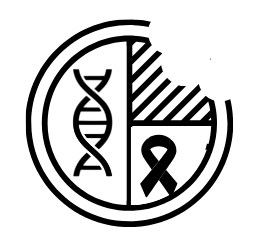Reading time: 4 minutes
Sara Musetti
As fancy as the many cancer therapies on the market may seem, the underlying goal for all cancer medicines is the same: kill cancer cells. Chemotherapies damage the DNA of rapidly dividing cells enough that the cells die, immunotherapies train the immune system to kill cancer cells, radiation causes cell damage and kills cells, etc. But, like all things, cancer cells have found a way to benefit from the death of cells around them and use it to prevent their own death.
When cells die, they often release a cloud of nutrients into their environment. One of the key nutrients they release is ATP, or adenosine triphosphate. ATP is the dominant form of energy in cells, making it extremely valuable. In tumors, there is a great amount of cell death, both from drugs killing cancer cells and from a lack of oxygen, also known as hypoxia, found deep inside tumors where the growth of cells has outpaced the growth of blood vessels, starving cells of nutrients. As these cells die, they release huge amounts of ATP into the environment. In fact, the amount of ATP outside of cells in tumors is up to 1000x higher than in healthy tissue!
A large amount of cell death in a small area is usually a signal to the immune system that there is some kind of infection or illness present that it needs to fight. Therefore, the amount of ATP in tumors should be a really good sign for immunotherapy. Hooray! Except, of course, that cancer cells have once again found a way around this phenomenon…
Many cancer cells respond to this influx of extracellular ATP (ATP that exists outside, rather than inside, cells) by covering themselves in cellular machinery known as enzymes to convert ATP into adenosine, its most basic form. And adenosine, unfortunately, acts in completely the opposite way of ATP. Whereas ATP activates the immune system against a threat, adenosine tells the immune system to shut down. So for cancer cells, turning ATP into adenosine is like turning on the sprinkler system in a burning building–it’s the only way of saving themselves. The only difference between ATP and adenosine is the presence of three phosphate groups, small groups of one phosphate atom and four oxygen atoms. Cancer cells overexpress CD39 and CD73, two enzymes, on their surface that work together to sequentially pull these phosphate groups off ATP and turn it into adenosine. In this way, tumors are able to quickly cycle from an immune activating, tumor-fighting environment to an immunosuppressive, tumor-supporting environment. Adenosine has even been linked to cancer cell proliferation, further driving the ability of tumor cells to survive with more adenosine present.
Given that CD39 and CD73 are both present on the surface of cancer cells, they have been the focus of a great deal of cancer research. Measuring the amount of CD73 on tumor samples during a biopsy can help doctors estimate the prognosis of patients, as more CD73 tends to correlate with poorer outcomes. However, because of the nature of these enzymes, they’re also promising targets for new therapies. If researchers can inhibit the activity of CD73, the final step in producing adenosine, or both CD39 and CD73, thereby keeping ATP concentrations in the tumor high, they can potentially push the tumor from pro-tumor back to anti-tumor, and let the immune system clear the tumor. Many of these inhibitors will likely be used in combination with other immunotherapies that can prime the immune system against a tumor, such as a cancer vaccine.
Each step taken toward understanding the mechanisms by which tumor cells survive is a step toward a better cure. The human body is a series of delicately balanced scales that cancer often manages to corrupt, but each time we manage to chip away at one of cancer’s strengths, we move closer to beating it.
Works Cited:
Boison, D., & Yegutkin, G. G. (2019). Adenosine Metabolism: Emerging Concepts for Cancer Therapy. Cancer Cell, 36(6), 582-596.
Images created by the author using BioRender.
Header Image: The effects of adenosine on the tumor microenvironment.
Image 1: The conversion of ATP to adenosine by CD39 and CD73.
Edited by Aishwarya Subramanian


Leave a comment